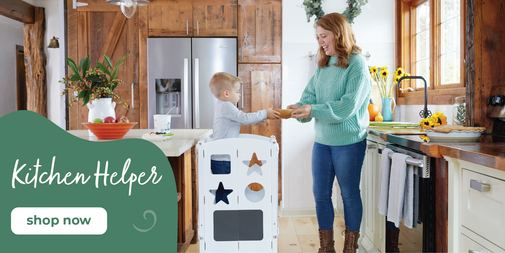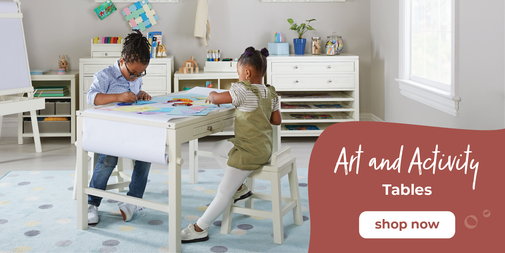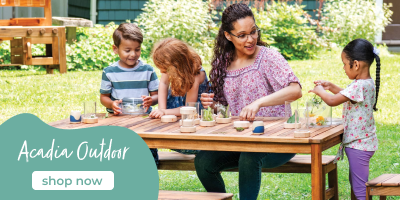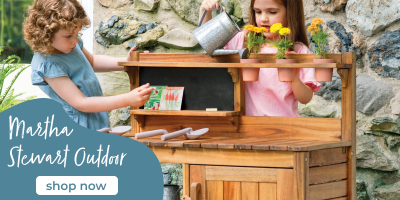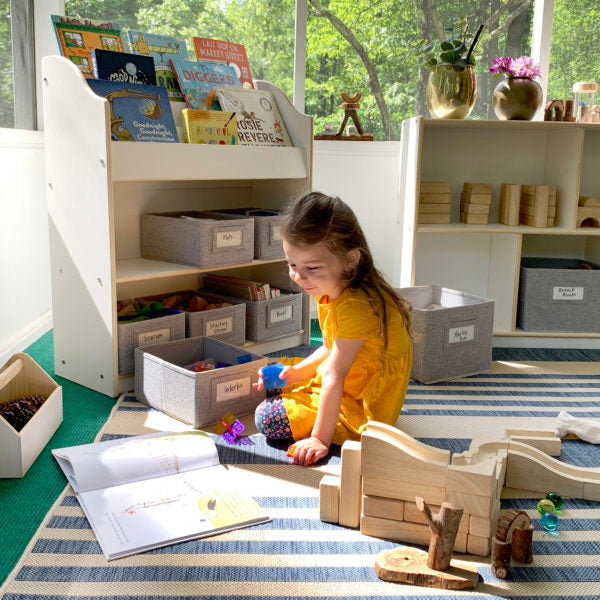What Does Home Learning Look Like for Us?

I’m a mom. I’m an architect. I’m a teacher. Those roles have each taken precedence in my life in differing ways in the past. Sometimes the roles converge, sometimes they clash, and it’s always a balancing act. Now, in the time of the Coronavirus, those roles need to mesh and balance with an immediacy that I’ve never experienced before.
I know I’m not alone. Like most parents and caregivers across the country – and around the world- my family is homebound indefinitely and working hard to redefine what our days look and feel like to regain a sense of normalcy. Where work, school, daycare and other planned activities had filled out our weekly schedules in a reliable, if sometimes overly full way, we’ve had to come up with new solutions that work for our family.
I needed a plan. And quick.
Step 1: Take a few deep breaths… and then a few more.
Step 2: Stress bake. Cookies, pizza, muffins, whatever.

Step 3: Time to get started. I realized I needed to define a space within our home that would serve as a dedicated learning environment for my children. Recognizing that this had to be a somewhat long-term solution, and that we wouldn’t be entertaining guests during this time, I was open to the idea of rearranging one of the areas in our house to accommodate this space.
Step 4: Identify what kids need to feel comfortable and engaged in learning. At ages 3, 7 and 9, my kids are at very different stages. In a typical school setting, this range of ages would be separated, but in my home, they are together. Sometimes on top of each other. All day long. So, I knew I’d need 1. spaces for individual, focused work and play; 2. spaces for side-by-side work and play; and 3. spaces where they could all work and play together.
Step 5: Embrace flexibility. A home learning environment need not look like a classroom full of desks and chairs. Instead, this is a chance to understand what kind of space your child needs as an individual. A benefit of home-based learning is the flexibility to give each child the space and place they need to be their best. Anyone else have a child that prefers to read while hanging their head upside down off the front edge of the couch, with legs draped over the back cushions? Or while snuggled under a blanket on a comfortable chair? Or sitting outside in the sun? This can’t really happen in a typical classroom. Step 6: Give children… Hold on, I need to get someone a snack.
Step 6: OK, where was I? Right: Give children safe independence. My motivation for this is partly selfish: giving my kids the freedom to choose their own snack, or what they work on or play with frees me up from having to drop everything to get things for them. Low shelves, preset activities, clear bins, organized supplies, and materials coordinated by subject matter helps facilitate that. In addition, each day I work with the kids to create a daily schedule that maps out the planned activities (work time, “kid’s choice,” video chat with school friends, movement, special activity, etc.) so the kids have some ownership and know what’s coming, and when it’s coming, during the day. Our lives as adults have been upended in the wake of the coronavirus, and so have our children’s, but by offering children a sense of ownership over their activities and decisions reestablishes a baseline of stability for them that school had provided.

Finally, find a way to see the opportunity in this challenge. Despite the ever-present feeling of “I have too much to do in not enough time” along with the multitude of unknowns that this global crisis has presented, being at home with family can be restorative and a chance to reconnect with each other, and our own selves. If we can redefine our expectations of what learning looks like by creating a nurturing environment in our homes that supports children’s needs just for this time period, then we have succeeded. If, by some chance, we learn from this time and apply it to our lives in the future, then we’ve excelled. This is not easy, but it’s also a time we won’t forget, and so what choice do we have but to make the best of it?
Repeat Steps 1 and 2 as needed.
Lauren Magee is the Director of Architecture and Environmental Design at Guidecraft, and design principal at LK Magee Architecture + Design. Her years of professional experience as an executive level architect, her role as an associate professor of architecture at Drexel University and Illinois Institute of Technology, her recent tenure as an elected school board member and her current work with students and teachers at all levels combine to enrich her inspired approach in the design of learning environments. Most recently, Lauren has embarked on a journey, affectionately called Lauren’s Learning Lab, that combines her role as mother, architect and teacher to help other parents as they transition from the classroom to home-based learning environments. Subscribe to our Guidecraft Youtube channel here to begin receiving alerts on her upcoming her web series – coming soon: https://www.youtube.com/channel/UCZrTaDaeJVyeIFkFxgmok2A
